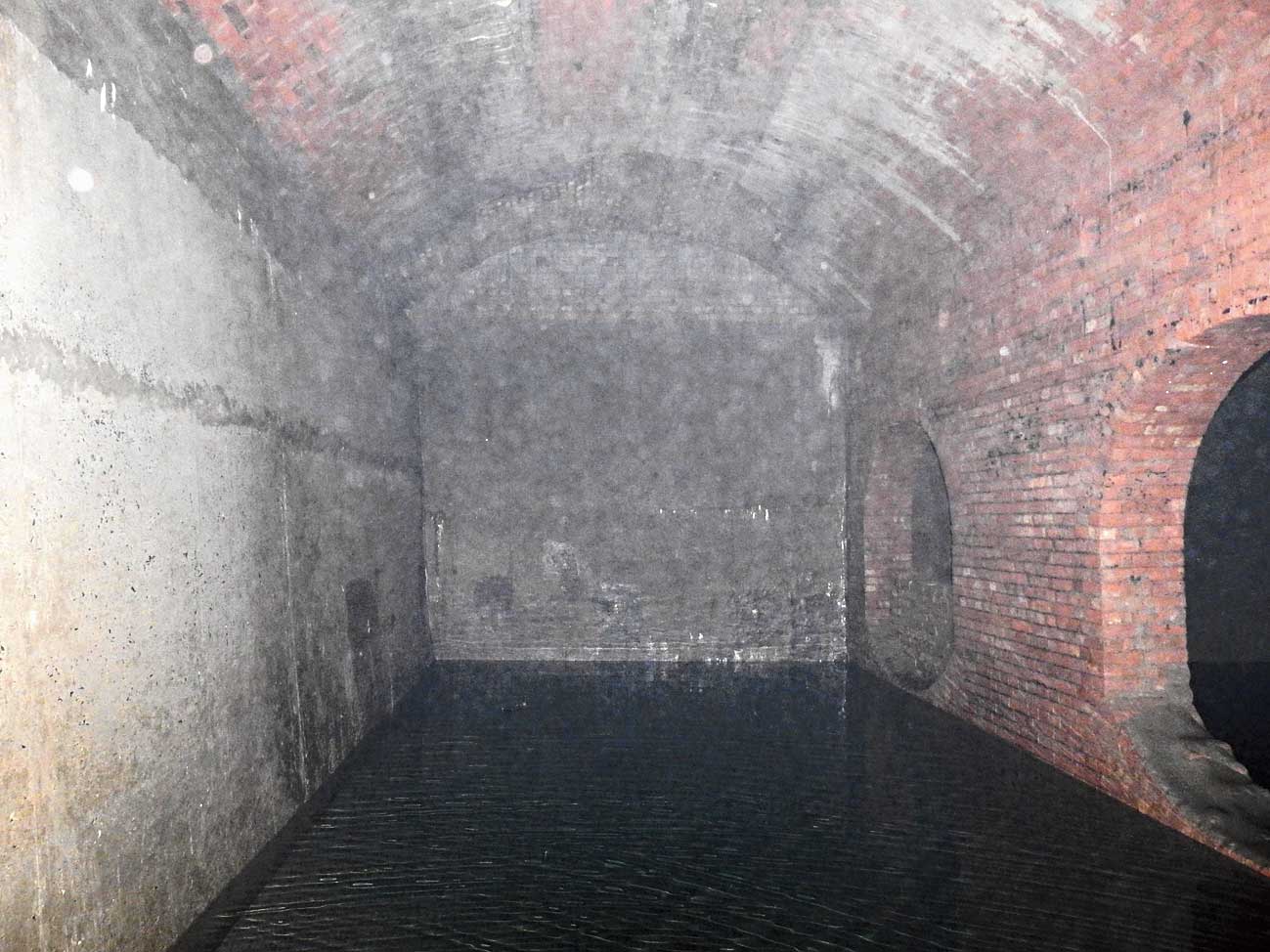A team from Jadavpur University that has been inspecting the water reservoir under Mohammad Ali Park since a part of its wall collapsed on Sunday morning has recommended that 14 inch of soil be removed from above the tank’s roof to prevent a cave-in.
Till the soil is removed, the team wants the CR Avenue park to remain closed.
The team made the recommendations in a preliminary report it sent to the Calcutta Municipal Corporation on Thursday after the members and some civic engineers entered the reservoir.
Gokul Mondal, an associate professor at JU’s construction engineering department, said they spotted a number of “distress marks” on the ceiling. “There are cracks, deflections and deformations. We could see several such distress marks from inside,” Mondal said.
“Deflections mean the roof has come down from its original position,” said one of the inspecting engineers from the civic body.
Mondal added the visual inspection inside the reservoir was restricted to portions of only one vault of the reservoir. The entire reservoir, spread across 16,000sq ft, has several vaults.
Biswajit Som, a visiting professor at JU’s construction engineering department and a member of the inspecting team, said the lime mortar used to build the reservoir’s arch-shaped roof had lost its binding property.
“So, cracks have appeared along the brick joints. The tank can even cave-in if the load is not lessened,” he said.
The health of the brick-and-mortar reservoir, which was built during the British period, has been under focus since the collapse of a portion of the wall along the pavement of the Esplanade-bound flank of CR Avenue.
Mohammad Ali Park has remained close since.
Engineers have said the rise in load resulting from dumping of layers of soil over the decades caused the wall to collapse. The increase in load, according to engineers, is also responsible for the cracks on the roof of the reservoir.
“There was hardly 2ft of soil above the top-most point of the arch-shaped roof of the reservoirs in the 1990s. Now, there is more than 4.5ft of soil,” a CMC engineer had said on Sunday. “In the late 90s, the reservoir wall that collapsed rose at least 2 ft above the floor of the park. Now, the park floor is at least 1ft above the wall.”
The JU teachers had said on Tuesday that soil had blocked air vents in the reservoir, resulting in a rise in pressure from inside.
With the vents blocked, the air inside the reservoir remains trapped. The rise in air pressure from inside and the increase in load from above together were responsible for the cracks in the reservoir, according to engineers.
The inspection team on Thursday was able to locate one air vent in the reservoir.
Civic officials said they would dig open the blocked vents to keep air circulating inside the reservoir.
“That will help those who will enter the tank for inspection. The inside is now stuffy and humid,” an official said.
The JU team in its report has stressed the need for a thorough inspection, which is not possible in the absence of air circulation inside.
“We have only submitted a preliminary report. At least one-and-a-half-months will be needed to file a detailed report,” said Som. “The detailed report will mention the methodology of repairs and the materials to be used.”
The 3 million gallon capacity reservoir, which caters to people living in the Mechua and Burrabazar areas, is being used to store drinking water since 1998, when a booster pumping station was set up on the park premises. Before that fire tenders used to draw water from the reservoir.

